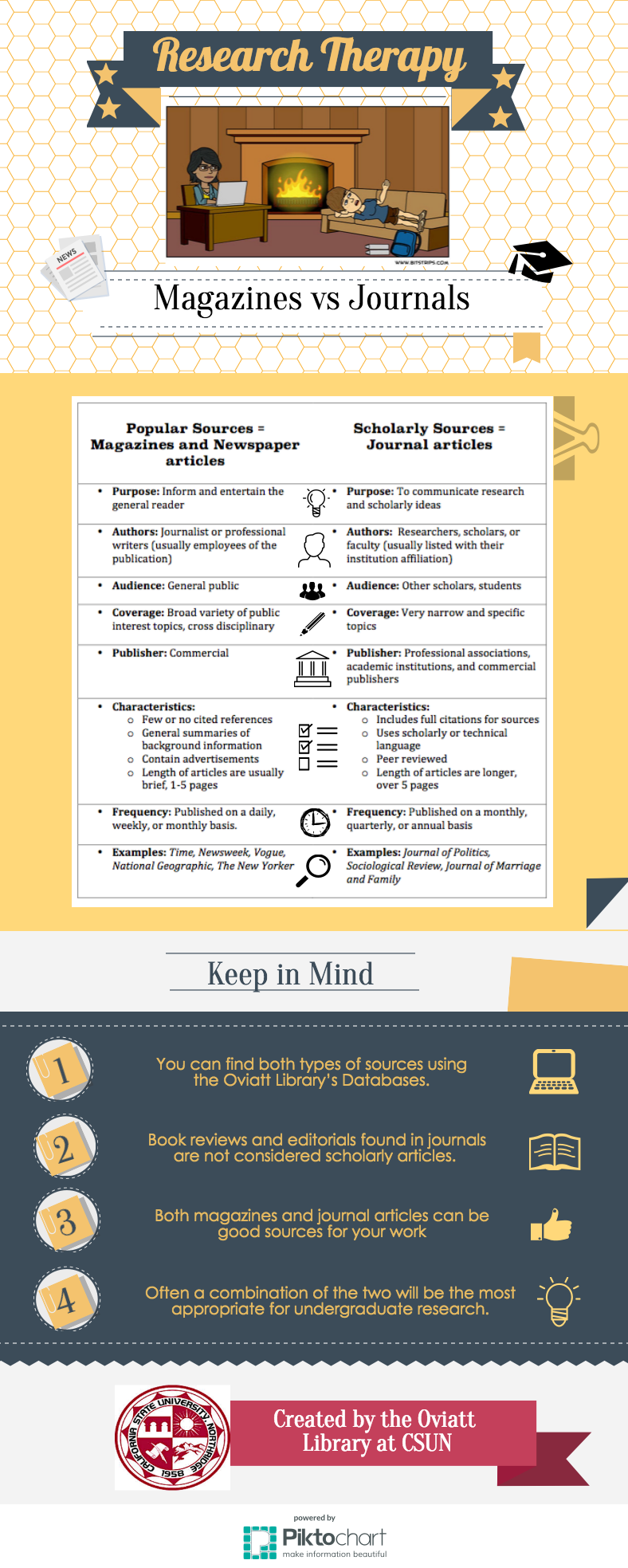Magazines vs. Journals
Popular Sources = magazines and newspaper articles
- Purpose: Inform and entertain the general reader
- Authors: journalist or professional writers (usually employees of the publication)
- Audience: general public
- Coverage: Broad variety of public interest topics, cross disciplinary.
- Publisher: Commercial
- Characteristics:
- Few or no cited references
- General summaries of background information
- Contain advertisements
- Length of articles are usually brief, 1-5 pages
- Frequency: Published on a daily, weekly, or monthly basis.
- Examples: Time, Newsweek, Vogue, National Geographic, The New Yorker
Scholarly Sources = journal articles
- Purpose: To communicate research and scholarly ideas
- Authors: researchers, scholars, or faculty (usually listed with their institution affiliation)
- Audience: other scholars, students
- Coverage: Very narrow and specific topics
- Publisher: Professional associations, academic institutions, and many commercial publishers.
- Characteristics:
- Includes full citations for sources
- Uses scholarly or technical language
- Peer reviewed
- Length of articles are longer, over 5 pages
- Frequency: Published on a monthly, quarterly, or annual basis
- Examples: Journal of Politics, Sociological Review, Journal of Marriage and Family
Things to keep in mind:
- You can find both types of sources using the Oviatt Library’s Databases.
- Book reviews and editorials found in journals are not considered scholarly articles.
- Both magazines and journal articles can be good sources for your work.
- Often a combination of the two will be the most appropriate for undergraduate research.



